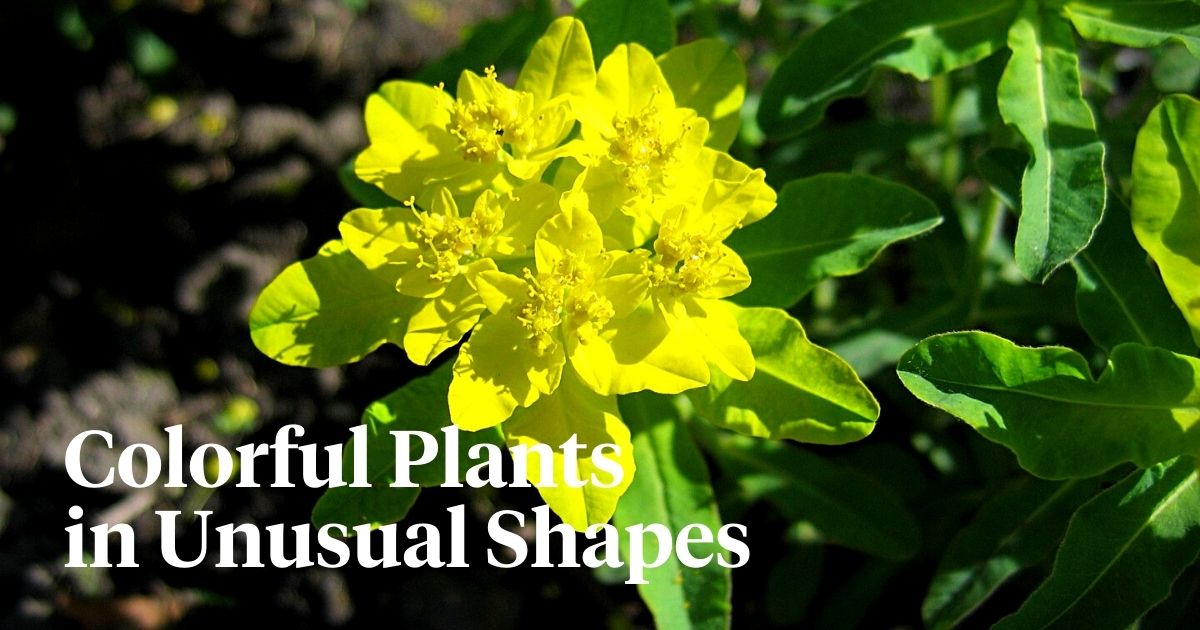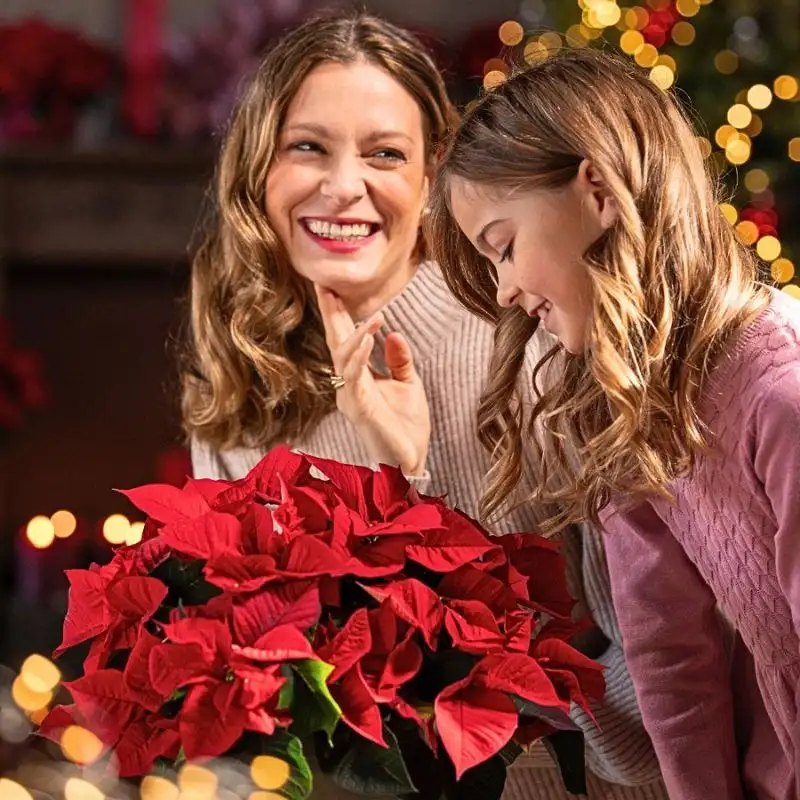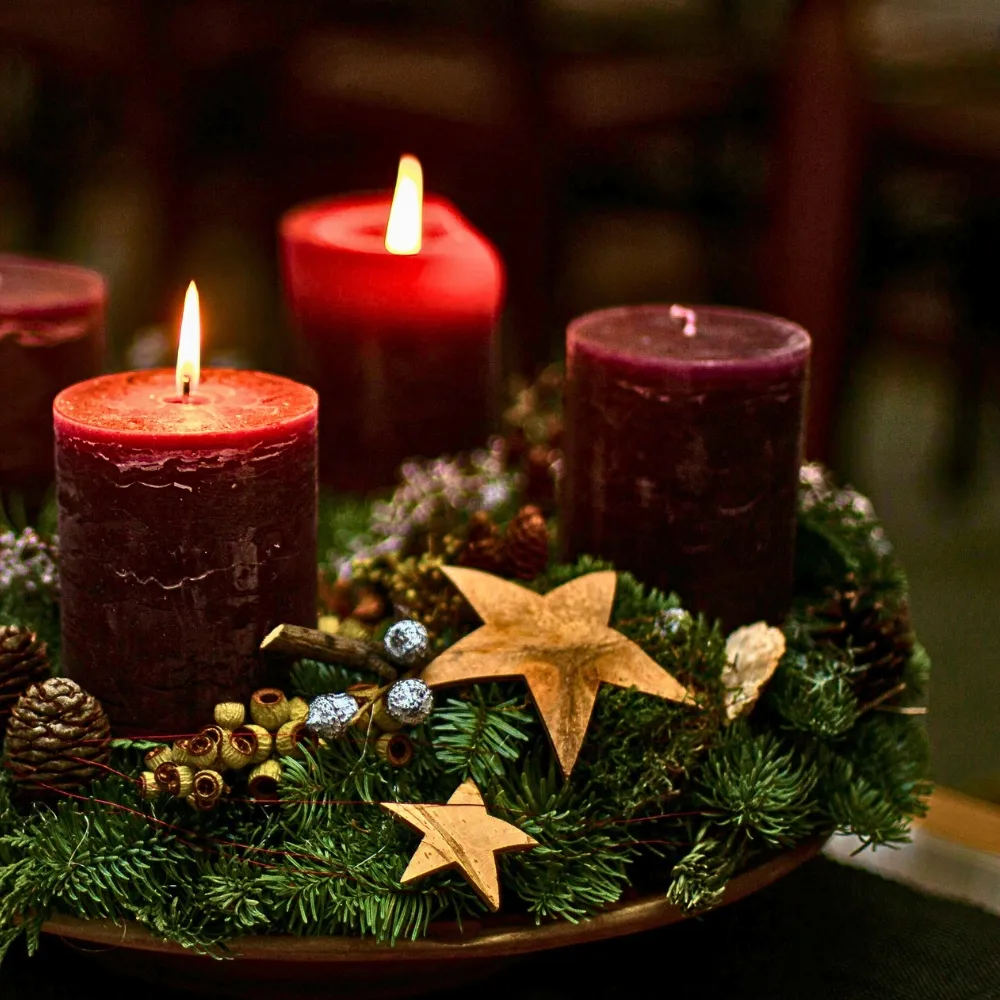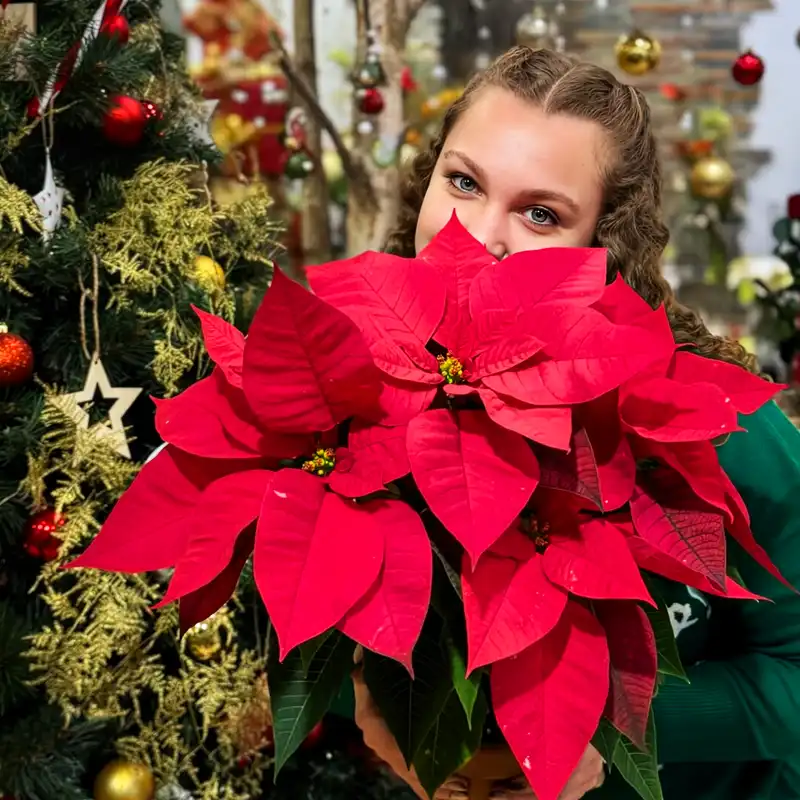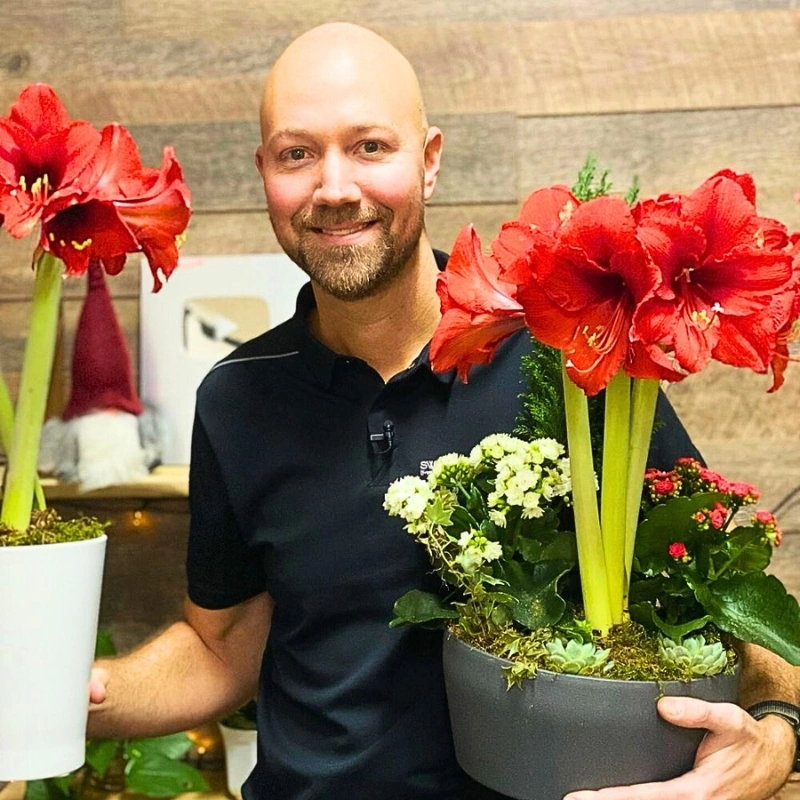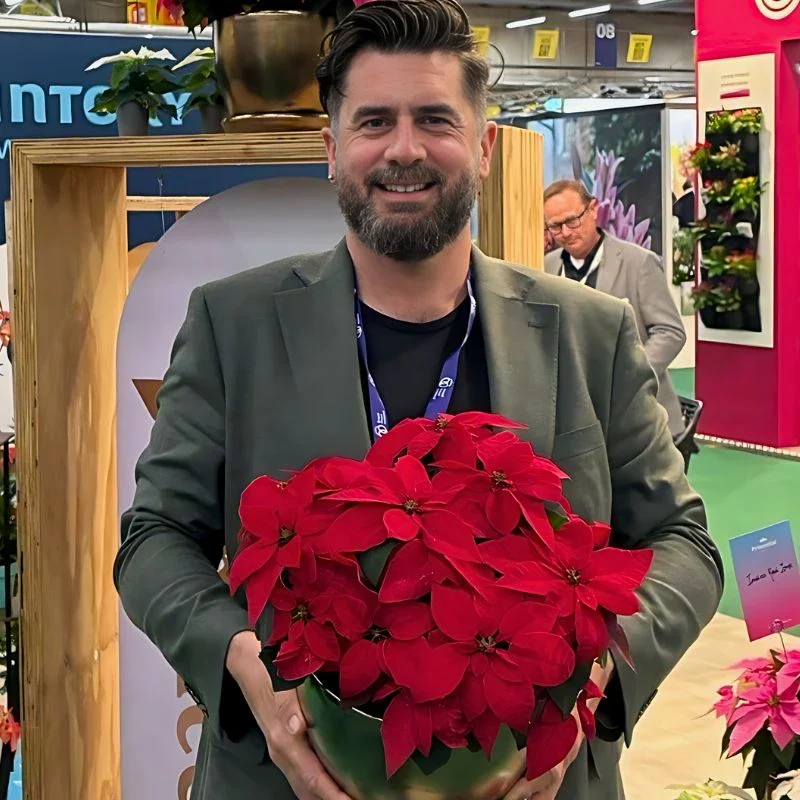With their diverse and equally captivating varieties, euphorbia plants are a popular choice among gardeners and plant enthusiasts. These striking plants, belonging to the Euphorbiaceae family, offer an array of unique shapes, sizes, and colors that add character and beauty to any indoor or outdoor space. The linking characteristic among all the species, however, is the presence of a milky white sap in the plants which oozes out of them when cut or damaged.
The Euphorbia genus includes annual, perennial, and biennial species. You'll find herbaceous plants and woody shrub species as well as both deciduous and evergreen species. The white poisonous sap in euphorbia plants is a substance that deer and rabbits don't particularly like and is highly toxic and an irritant to the skin and eyes. All euphorbia plants are toxic to humans and are toxic to dogs and cats. The level of toxicity in the plant varies from species to species.
Types of Euphorbia Plants
There are so many different Euphorbia plants, also named spurge, and they all look so different from one another. Euphorbia is an extensive genus of plants with more than 2,000 species.
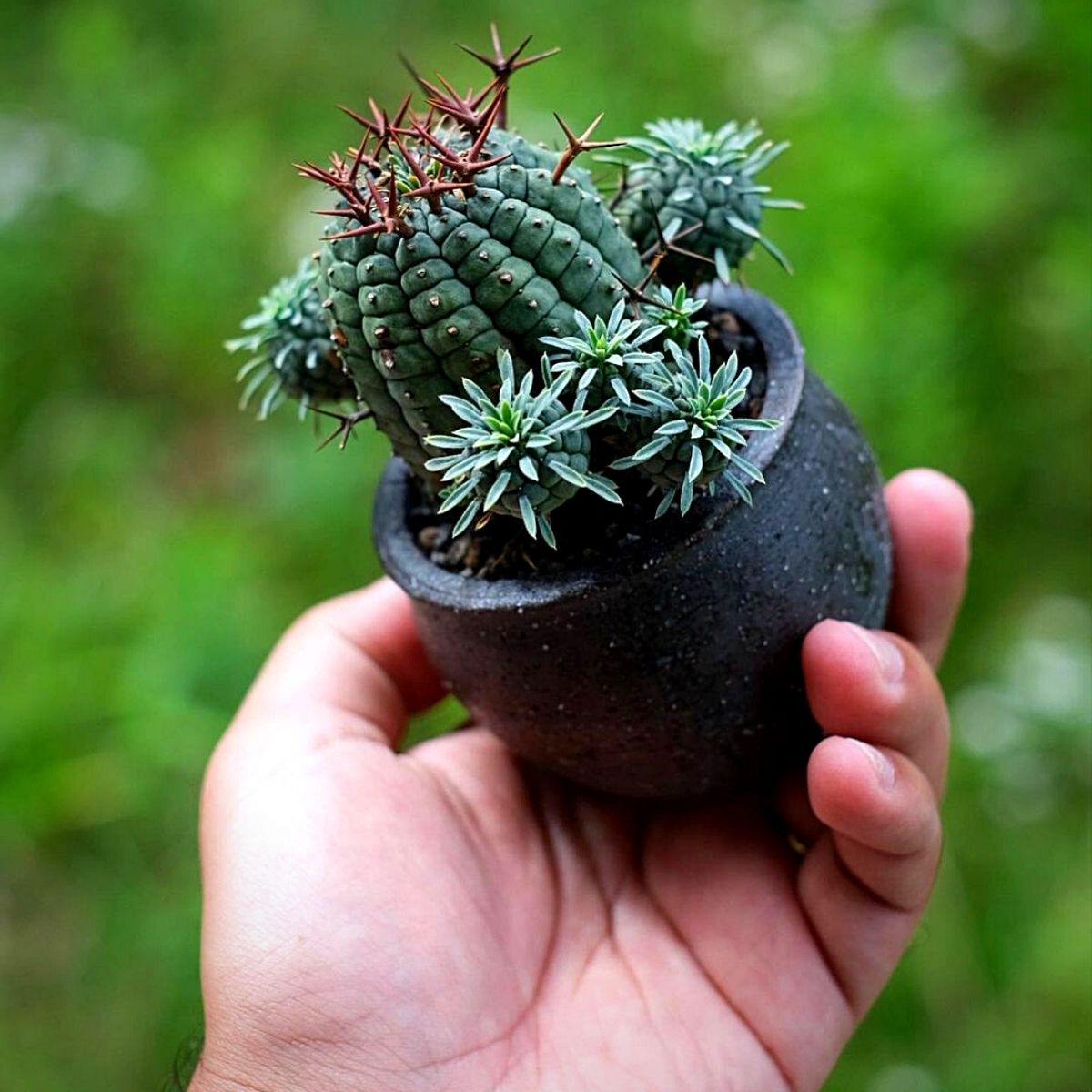
Photo by @shoma_okunai
About 1,200 of them are succulents, some with bizarre shapes and sometimes with wide, fleshy leaves. And others that look remarkably like cacti, complete with spines. The most well-known Euphorbia is the Poinsettia, which is a very popular plant for the Christmas holiday. You can find these potted plants at florists and garden centers in shades of bright red during the holiday season.
So, here are some popular varieties.
Poinsettia (Euphorbia Pulcherrima)
Poinsettias are synonymous with the Christmas holiday and festive season, renowned for their vibrant bracts that come in various colors. These plants prefer bright, indirect light and well-draining soil, and are mostly kept away from drafts and extreme temperature fluctuations when grown.
This popular Christmas-time plant can be bought as potted plants in brilliant red, pink, white, and some other colors at florists and garden retailers. The bracts, which are the colored leaves around the real flower, can also come in yellow, salmon, and greenish varieties, and are the real feature of poinsettias.
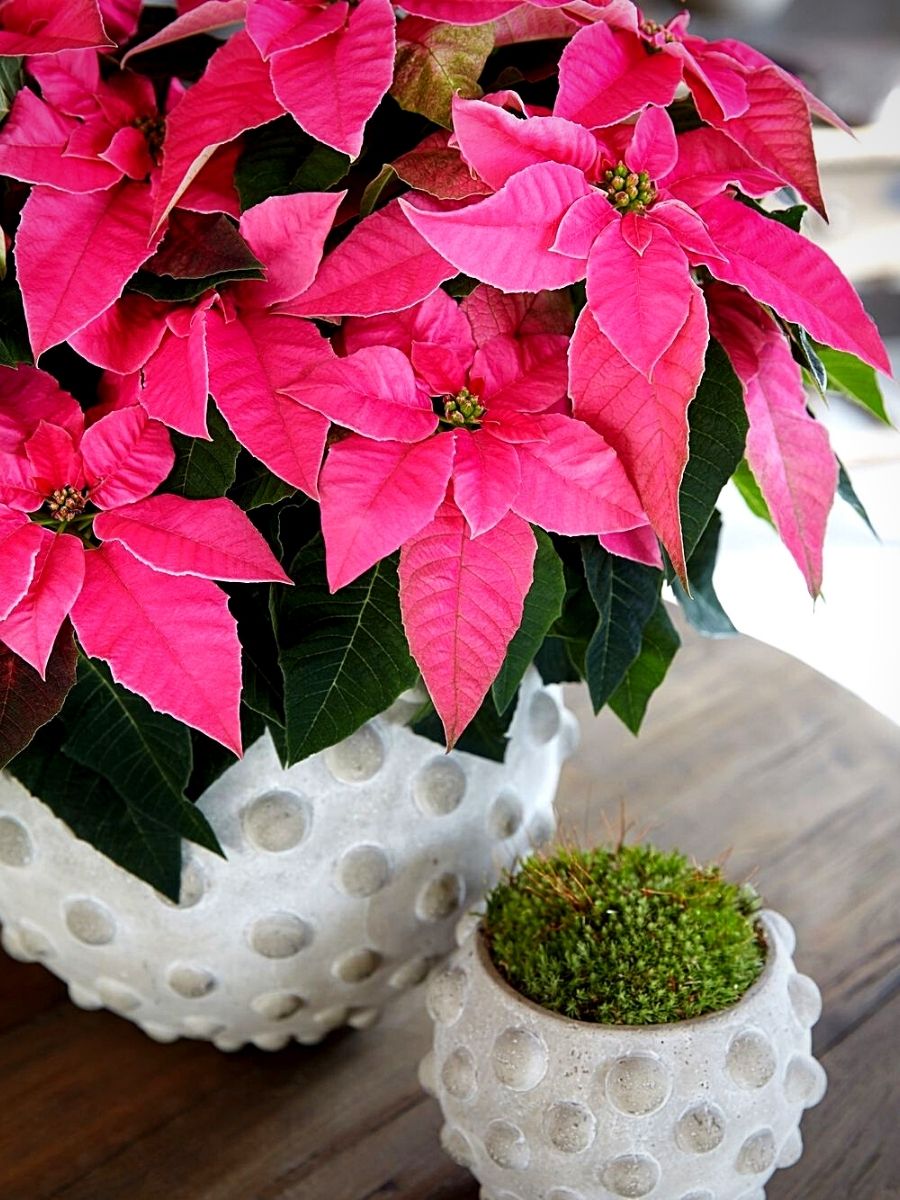
With proper care, a poinsettia you receive as a gift can outlive your Christmas tree and bloom again the following winter. In the tropics, you can find this Euphorbia variety as trees, and thus, very big. Here's more about poinsettias and their symbolism with Christmas.
Crown of Thorns (Euphorbia Milii)
The Euphorbia Crown of thorns is also known as Christ plant or Christ thorn and is a low-maintenance, easily adaptable plant. It can thrive as an indoor plant or outdoors. Crown of thorn plants have green leaves and small, colorful flowers. This plant also has sharp, spiny stems and branches. Different cultivars offer red, pink, or yellow flowers that bloom repeatedly.
Mostly known for its thorny stems and colorful bracts, Euphorbia milii is a resilient succulent that thrives in warm and arid climates. To grow this variety successfully, provide it with bright, indirect sunlight and well-draining soil. Water it sparingly, allowing the soil to dry out between the waterings. Also, prune the plant to maintain its desired shape and remove any dead or damaged branches.
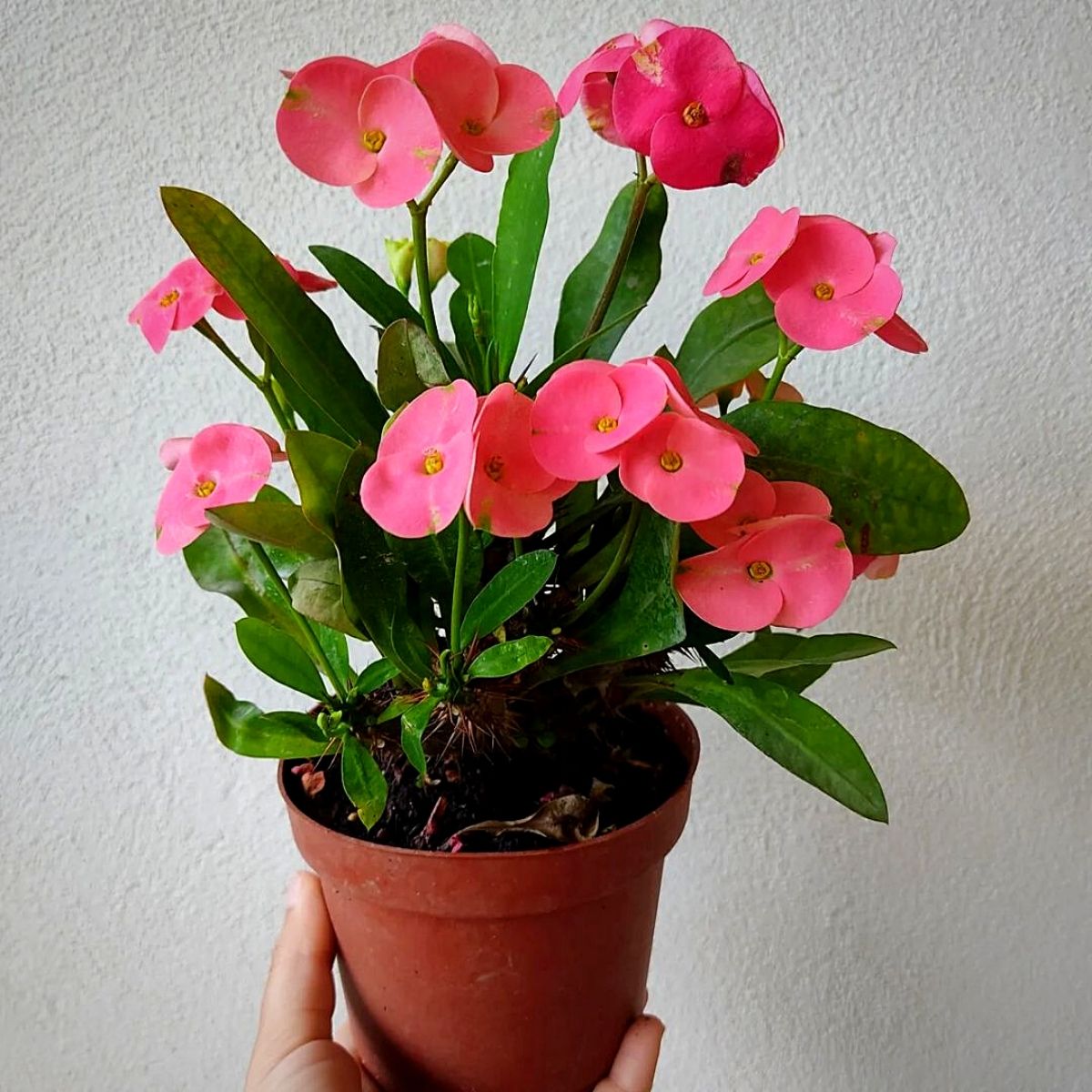
Photo by @kubrademiralay7
African Milk Tree (Euphorbia Trigona)
The Euphorbia Trigona, or the African Milk Tree as it's commonly known, is a highly architectural and curious houseplant. Easy to look after, pest resistant, and a fast grower, this means it makes the perfect specimen that adds interest to a sunny spot. There are two common types, the green one, and the reddish one, called Euphorbia Trigona Rubra.
With its distinctive cactus-like appearance, Euphorbia trigona makes a striking addition to any collection. This variety requires bright, indirect light and well-draining soil. Allow the soil to dry out completely between waterings, as overwatering can lead to root rot. In addition, protect it from cold drafts and provide occasional fertilization during the growing season.
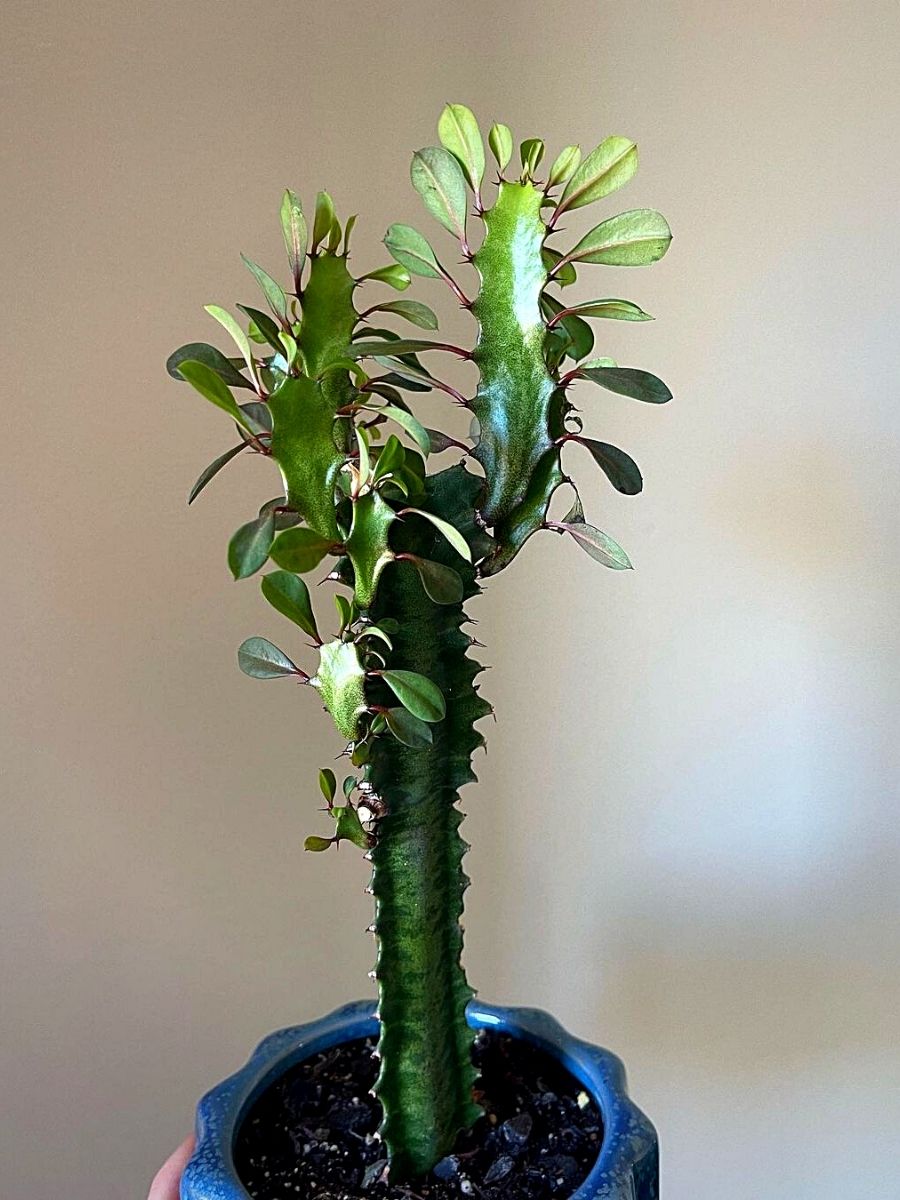
Photo by @ivey_vines
Baseball Plant (Euphorbia Obesa)
The Euphorbia obesa is a small symmetrical succulent that stays nearly perfectly round with a round, ball-shaped stem that gradually becomes cylindrical as the plant ages. It is usually grown as a houseplant but can be grown outdoors in frost-free zones.
This baseball plant usually stays small and globular succulent with a unique appearance resembling a baseball. It mainly requires bright light and well-draining soil. When growing it, water the plant sparingly, allowing the soil to dry out between the waterings. Ensure adequate air circulation and protect it from extreme temperatures.
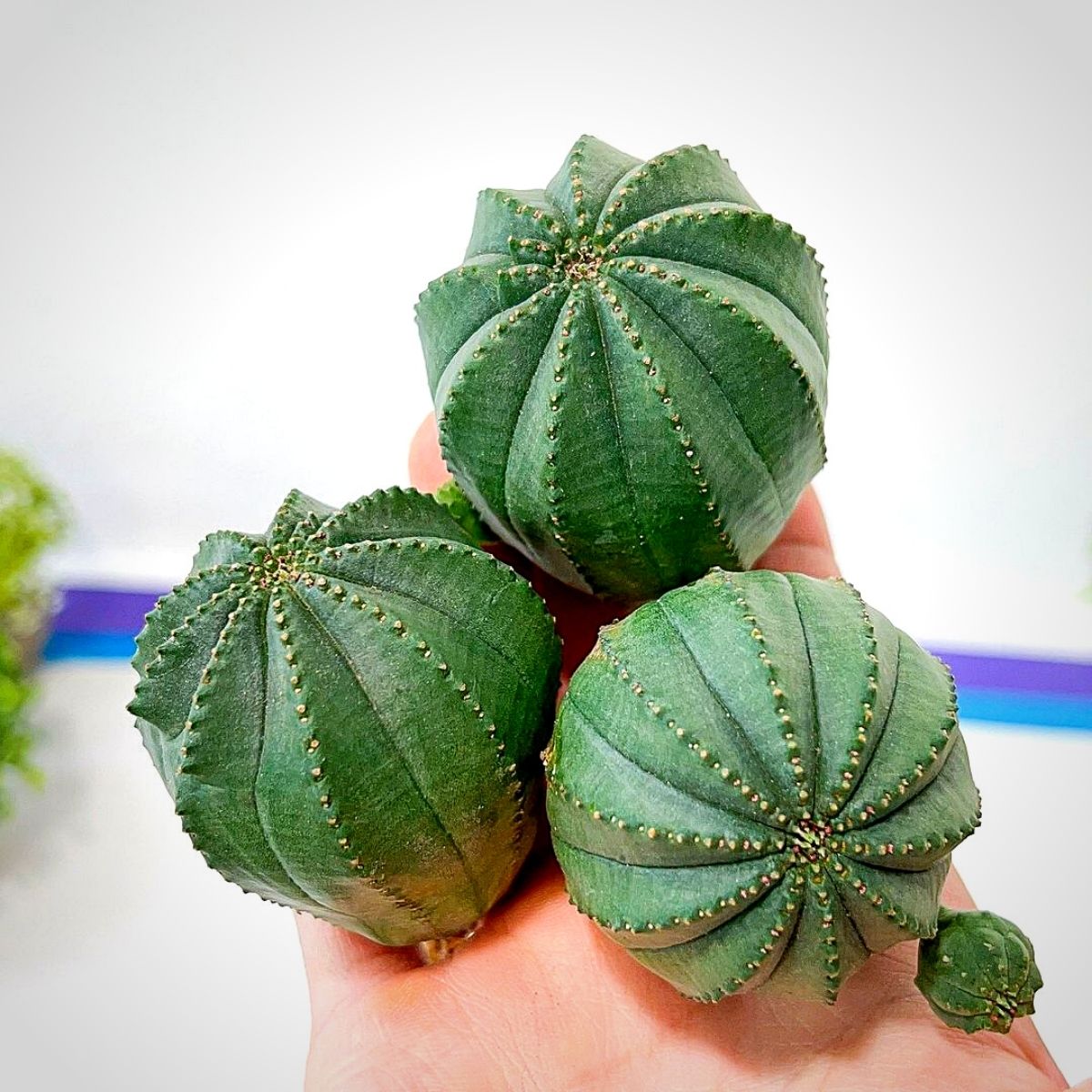
Photo by @lv_jungle
Pencil Cactus (Euphorbia Tirucalli)
The Pencil cactus, also commonly called milk bush due to its thick, white sap, is not a true cactus and photosynthesizes in its stems, not through the small leaves that appear at the end of its new growth (which are inconsequential to the plant’s health).
The variety has slender, pencil-like stems that resemble a cactus. It thrives in bright, indirect light and well-draining soil and requires sparing watering, allowing the soil to dry out between waterings. Be cautious of its toxic milky sap and handle it with care.
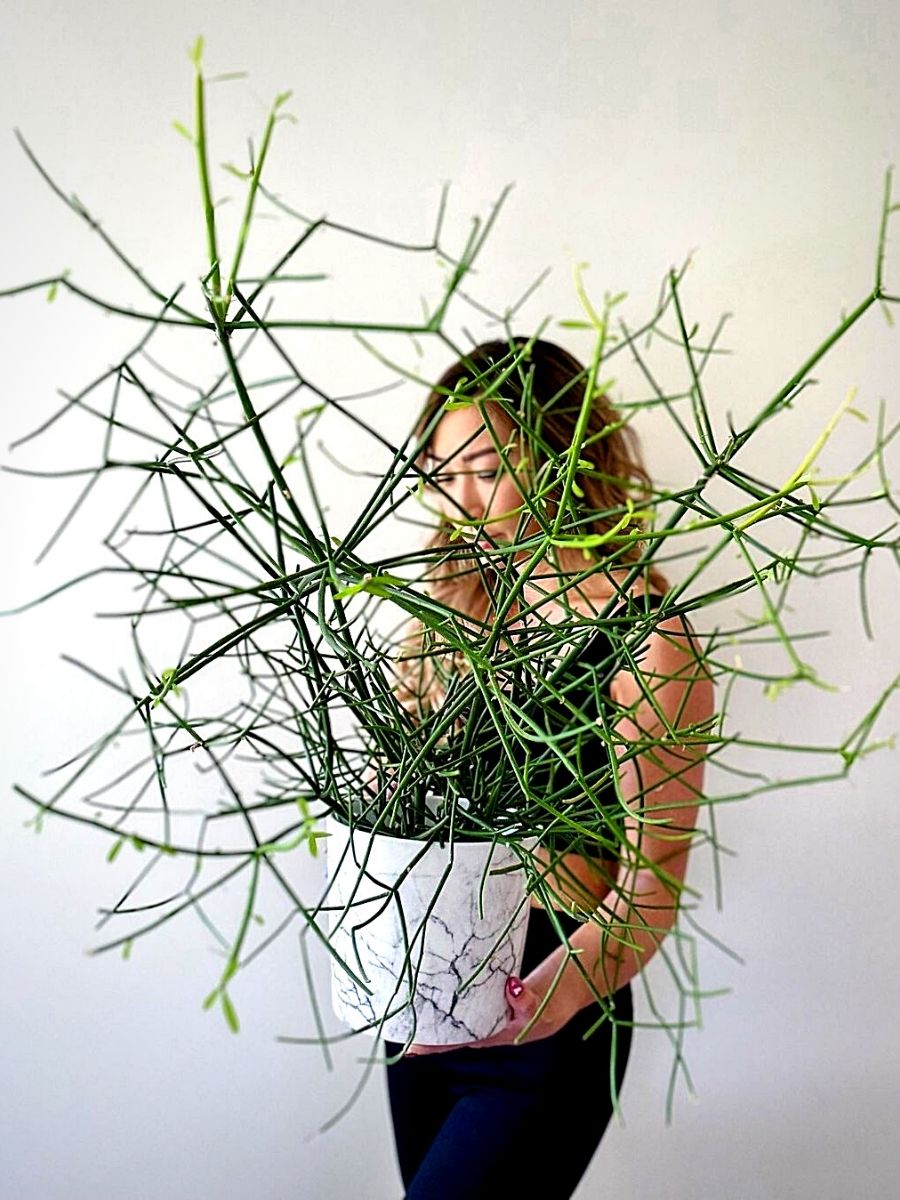
Photo by @kattieanneplants
Donkey Tail Spurge (Euphorbia Myrsinites)
The Donkey tail spurge is an evergreen, succulent perennial. It makes sprawling or trailing stems of spiraling gray-blue leaves, with clusters of chartreuse-yellow flowers appearing through the spring months.
Also called Euphorbia myrsinites, the donkey tail spurge is low-growing and prefers full sun and well-draining soil. It needs sparing watering, allowing the soil to dry out between these waterings. This variety is drought-tolerant and requires minimal maintenance.
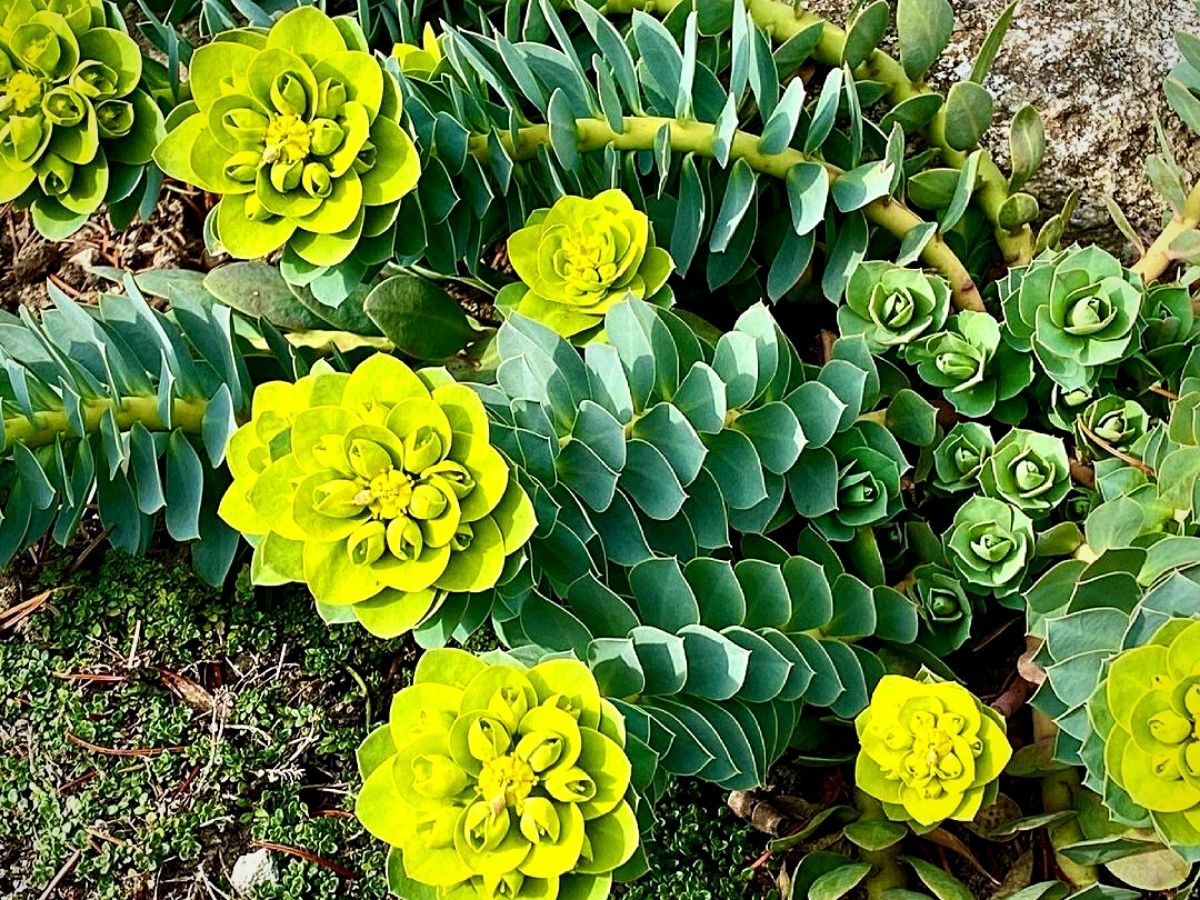
Photo by @fussygardener
Efanthia Wood Spurge (Euphorbia Amygdaloides Efanthia)
Euphorbia amygdaloides Efanthia is a hardy hybrid of Euphorbia amygdaloides and Euphorbia X martini and is a perennial plant. The plant has dark green or maroon lance-shaped leaves that fade to a blue-green color.
It blooms in spring with bright yellow-green flowers on red stems and tolerates dry conditions. It has deep-colored foliage in the fall months and is best grown in well-drained soils in full sun.
At maturity, Efanthia Wood Spurge reaches a height of 15 inches and a width of 18 inches and usually has dense foliage that extends all the way to the ground, negating the need for facer plants in front. It has a medium rate of growth and, in perfect conditions, can expect to live for around eight years.
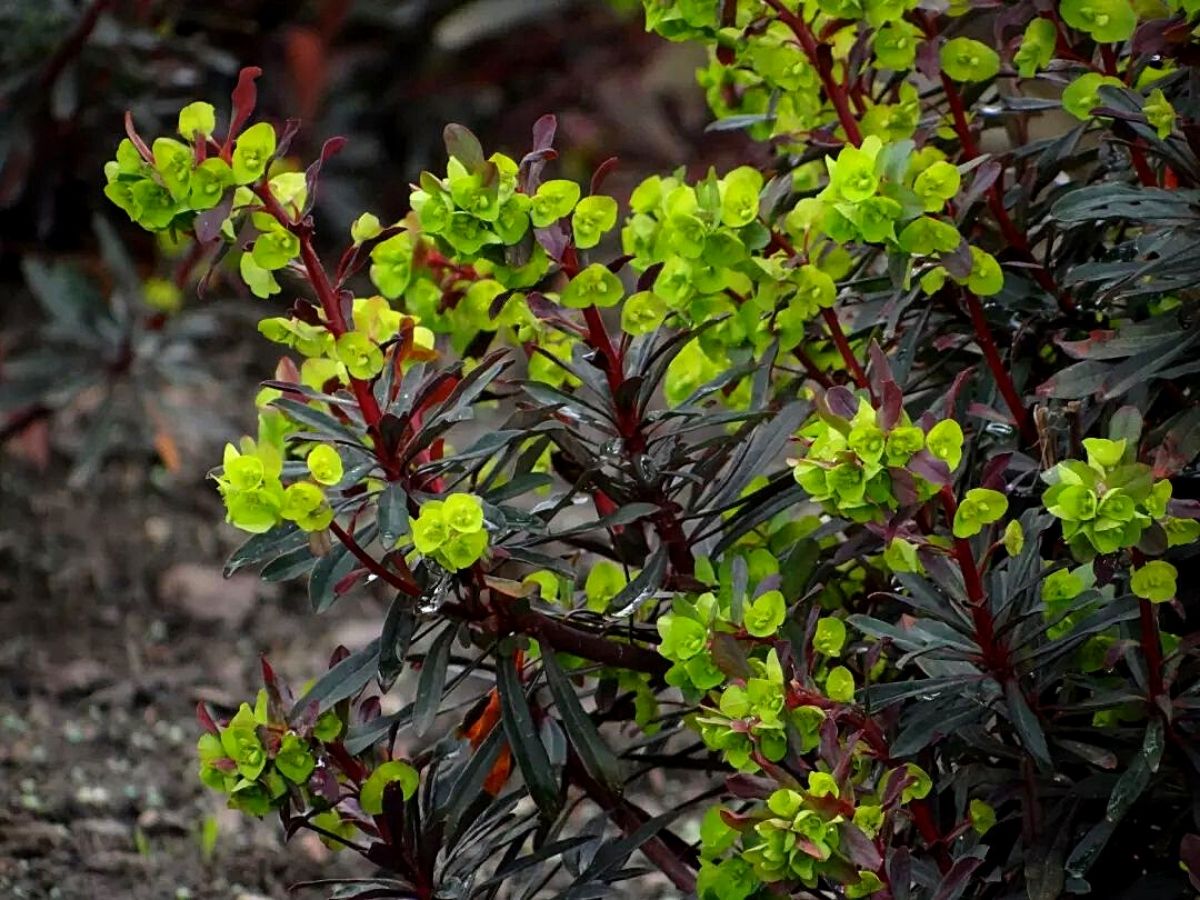
Photo by @timikerje
Cushion Spurge (Euphorbia Polychroma)
Euphorbia polychroma, commonly known as cushion spurge, is a herbaceous perennial plant belonging to the family Euphorbiaceae. It is native to central and southeastern Europe and is known for its attractive, yellow-green leaves/flowers and vibrant foliage, which makes it a popular choice among gardeners.
This semi-evergreen perennial will produce elliptical to oblong leaves. Its flowers are produced in cymes of yellow-green blooms from mid-spring to summer.
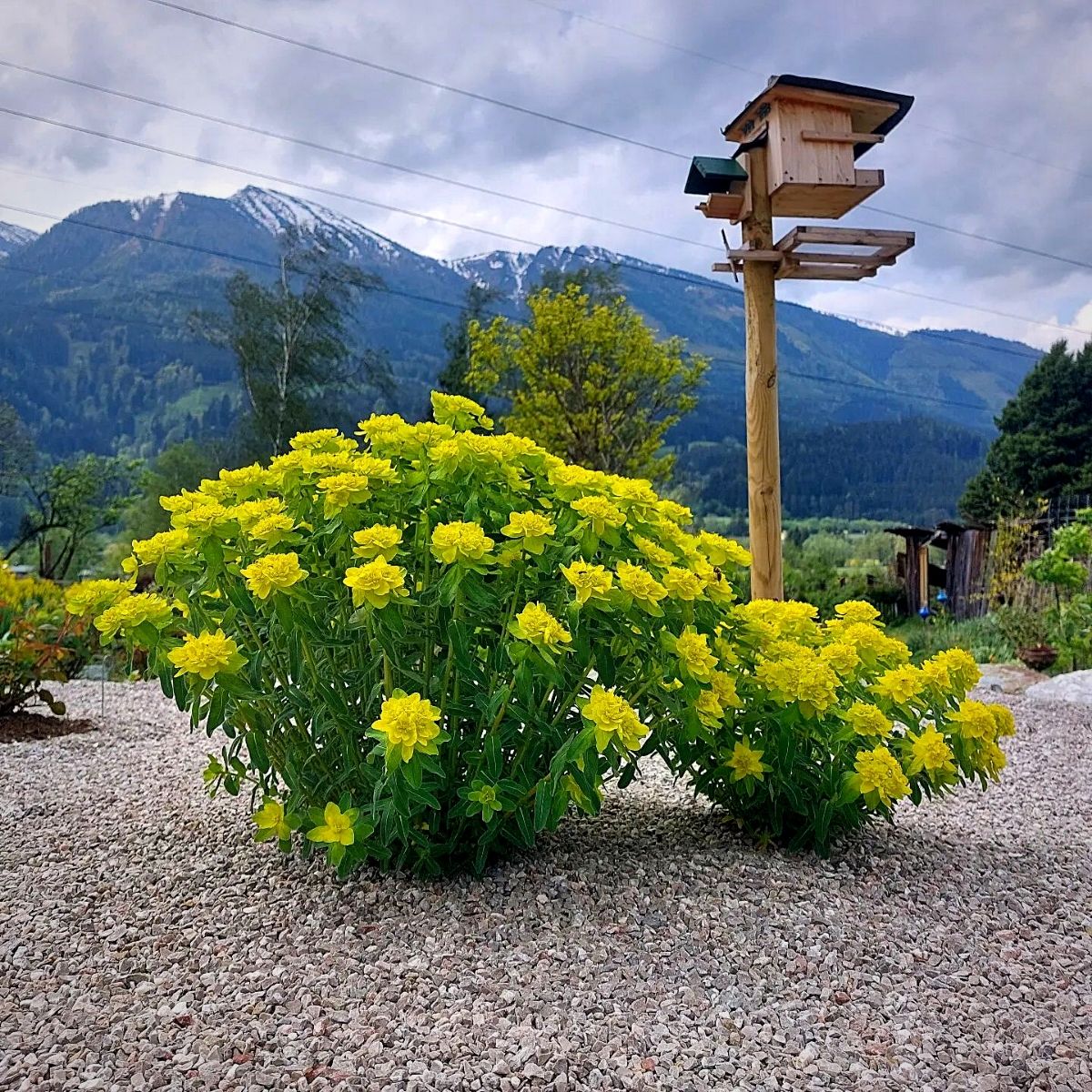
Photo by @ein_garten_in_oesterreich
Cowboy Cactus (Euphorbia Ingens)
Cowboy Cactus, also called Euphorbia ingens, is a type of succulent that looks like a cactus but is not. It is native to the dry regions of southern Africa, where it can grow up to 12 meters tall and has a tree-like structure with dark green, four-lobed stems that branch out and form crown-shaped foliage at the top.
This euphorbia is one of the most famous cacti in the world and looks very similar to the cacti from classic Western movies, which is why it is also called the cowboy cactus. Actually, the euphorbia is, of course, not a real cactus, it originates from Africa, whereas the cactus naturally has American roots.
This plant has spines along the sides of the stems and produces greenish flowers with yellow bracts in fall or winter. It is a low-maintenance plant that needs full sun, well-drained soil, and occasional watering. It is also toxic to humans and pets, so it should be handled with care. If you want to know more about cacti, then these are the 10 best indoor cactus varieties and how to care for them.
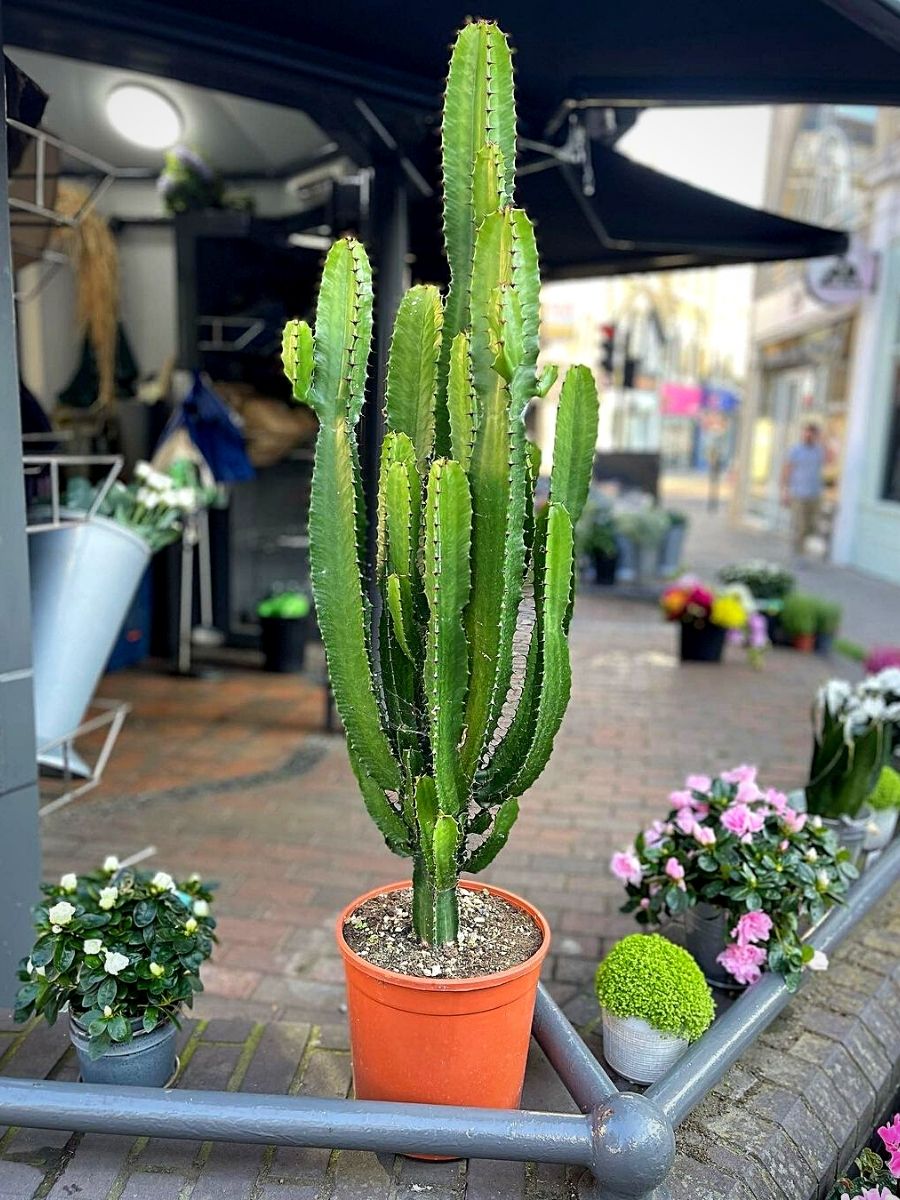
Photo by @amandasflowersrichmond
Euphorbia Lactea Cristata
Euphorbia lactea Cristata is a fascinating succulent that has a crested shape and a variety of colors. It is also known as coral cactus, crested euphorbia, or crested elkhorn.
It is a compact, evergreen, frost-tender succulent shrub on which the stem's growing point has mutated into a line or crest so that the plant eventually forms a dome 90cm (3ft) high and 60cm (2ft) wide of ridged, undulating, reddish-green growth that resembles the appearance of brain coral.
It is usually grafted onto the stem of another euphorbia species. Its slow growth, temperature requirements, and ornamental value make it a useful subject for a sunny window indoors.
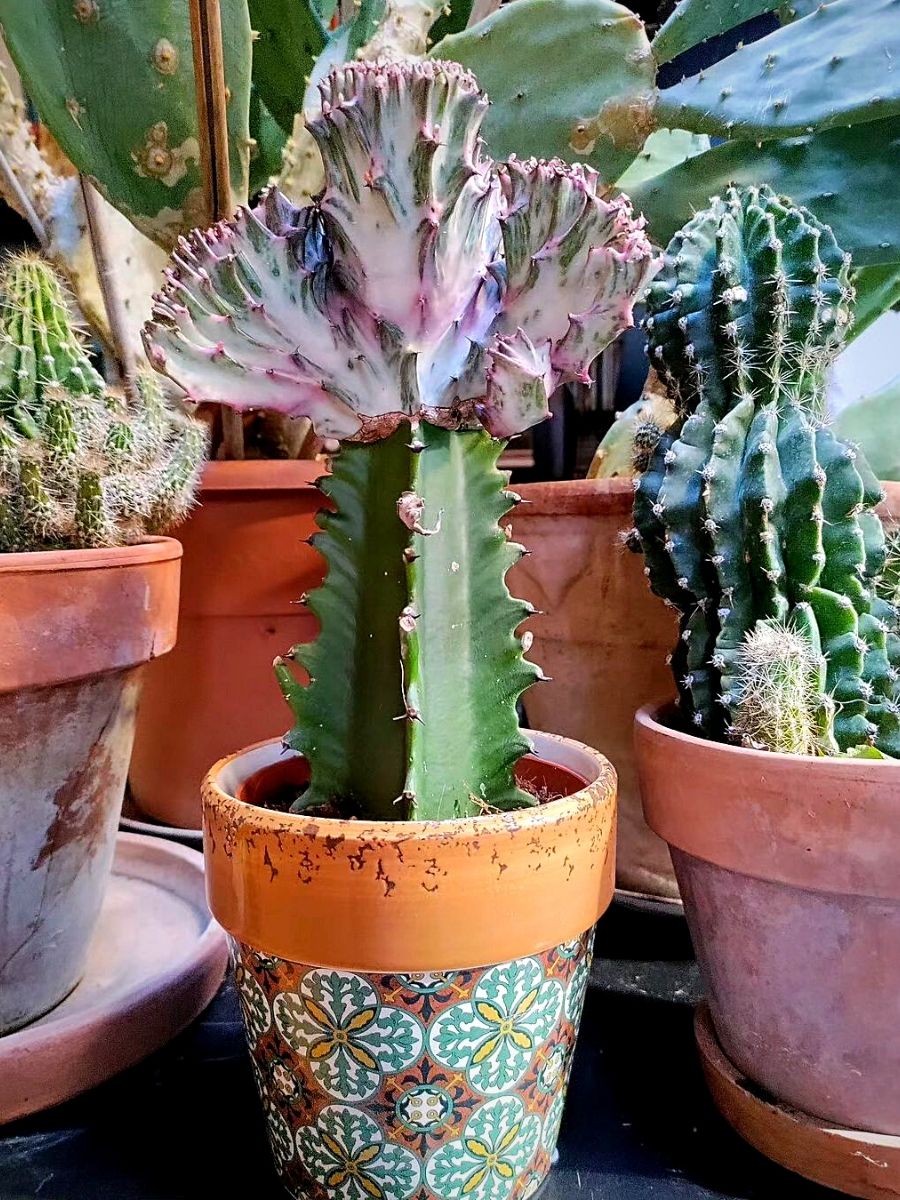
Photo by @ilmondodierica
How to Care for Your Euphorbia Plants
Growing Euphorbia plants can be a rewarding and enjoyable experience. These plants are versatile and with the right care, they can be wonderful additions to any garden or indoor space. They require relatively little maintenance but need some care and maintenance to get started, and once they do, they are remarkably self-sufficient. More euphorbia plants perish from over-care, particularly overwatering than from neglect.
So, to help you successfully grow and care for euphorbia plants, here is a comprehensive guide.
Soil and Watering
Well-draining soil is crucial for the healthy growth of Euphorbia plants. Use a cactus or succulent potting mix, or create your own by combining regular potting soil with perlite or coarse sand to improve drainage. Also, avoid using heavy or water-retentive soils that can lead to root rot. Root rot because of wet soil can swiftly kill a plant. If your plant is being grown in a container, the container needs to have lots of drainage holes. It is ideal to use an unglazed pot because it will let excess moisture escape via its walls and drainage holes.
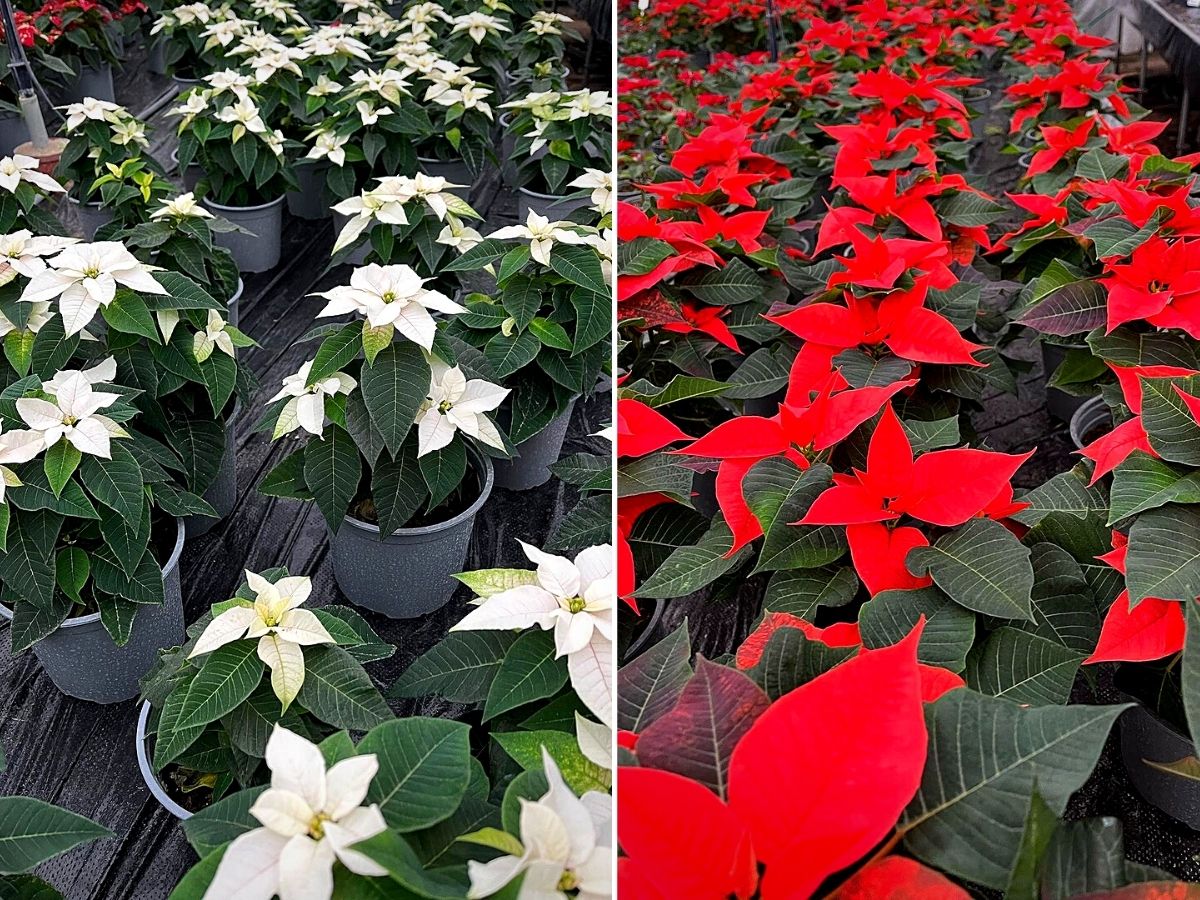
Photo by @plantsatobriensnurserieshull
Euphorbia plants, similarly, have unique watering needs. They generally prefer infrequent watering rather than being consistently moist. Allow the soil to dry out partially or completely between waterings, depending on the species and environmental conditions. To check for its watering conditions, stick your finger into the soil to check for moisture before watering. When watering, thoroughly saturate the soil and allow any excess water to drain away. Avoid overwatering, as it can cause root rot. To prevent powdery mildew and other fungus issues on the foliage, avoid overhead watering.
Light Requirements
Most Euphorbia plants thrive in bright, indirect light. So, place them near a window where they can receive several hours of sunlight each day. However, some species, such as Euphorbia lactea or Euphorbia tirucalli, can tolerate full sun exposure. Ensure you understand the specific light requirements of the Euphorbia variety you are growing.
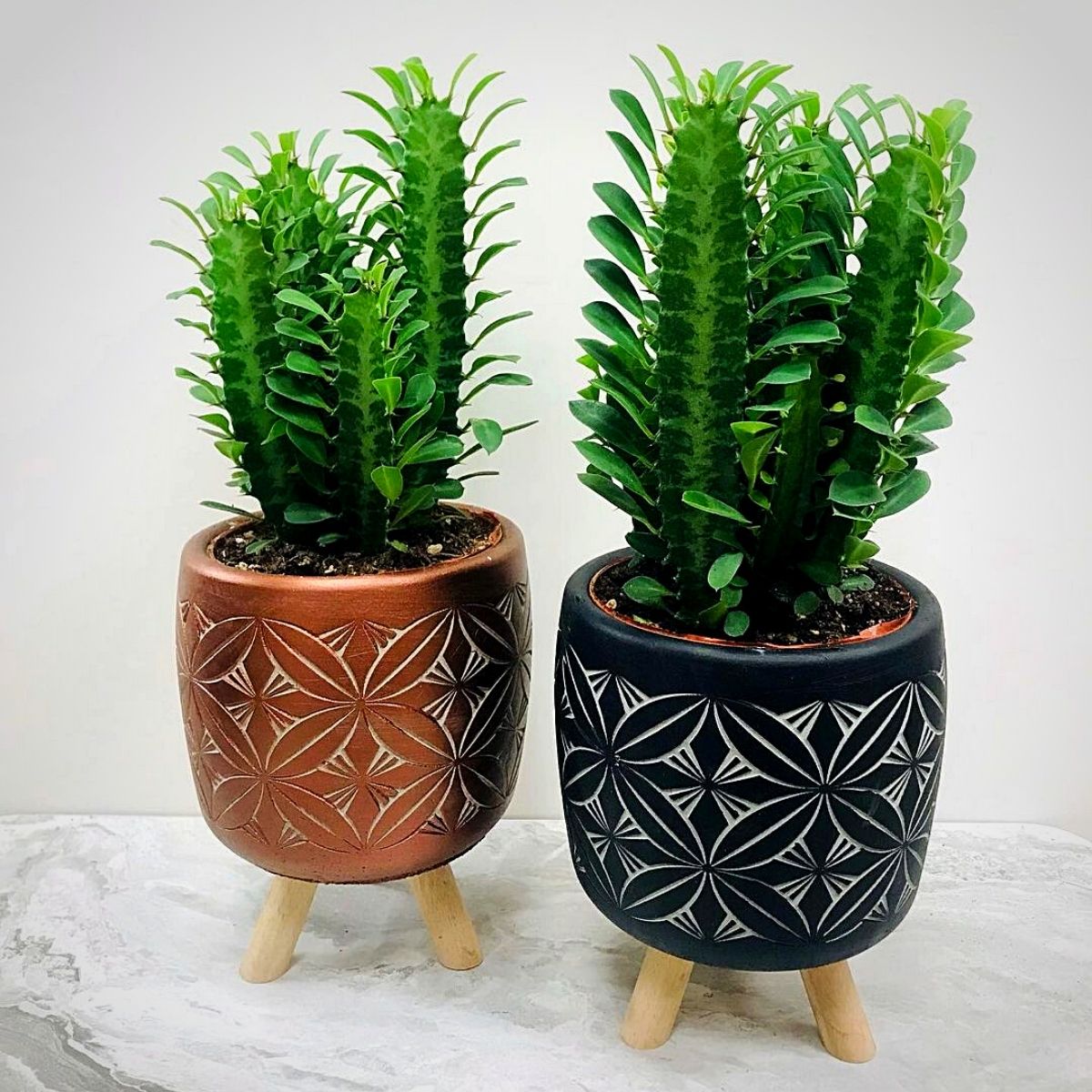
Photo by @karinca.cicek.tasarim
In essence, although some species can tolerate partial shade, euphorbia plants prefer full sun, which is defined as at least six to eight hours of direct sunlight on most days.
Fertilization
Euphorbia plants benefit from regular fertilization during the growing season, typically from spring to summer. Use a balanced, water-soluble fertilizer diluted to half strength and apply it every two to four weeks. Always follow the instructions on the fertilizer packaging and avoid over-fertilization, as it can lead to salt buildup and damage the plant.
Noteworthy is that when it comes to feeding your euphorbia plant, it depends on the species you have. While most will benefit from some fertilizing, it’s best to research the needs of your exact plant. Generally, those kept in pots tend to need more fertilizer than those planted in garden beds.
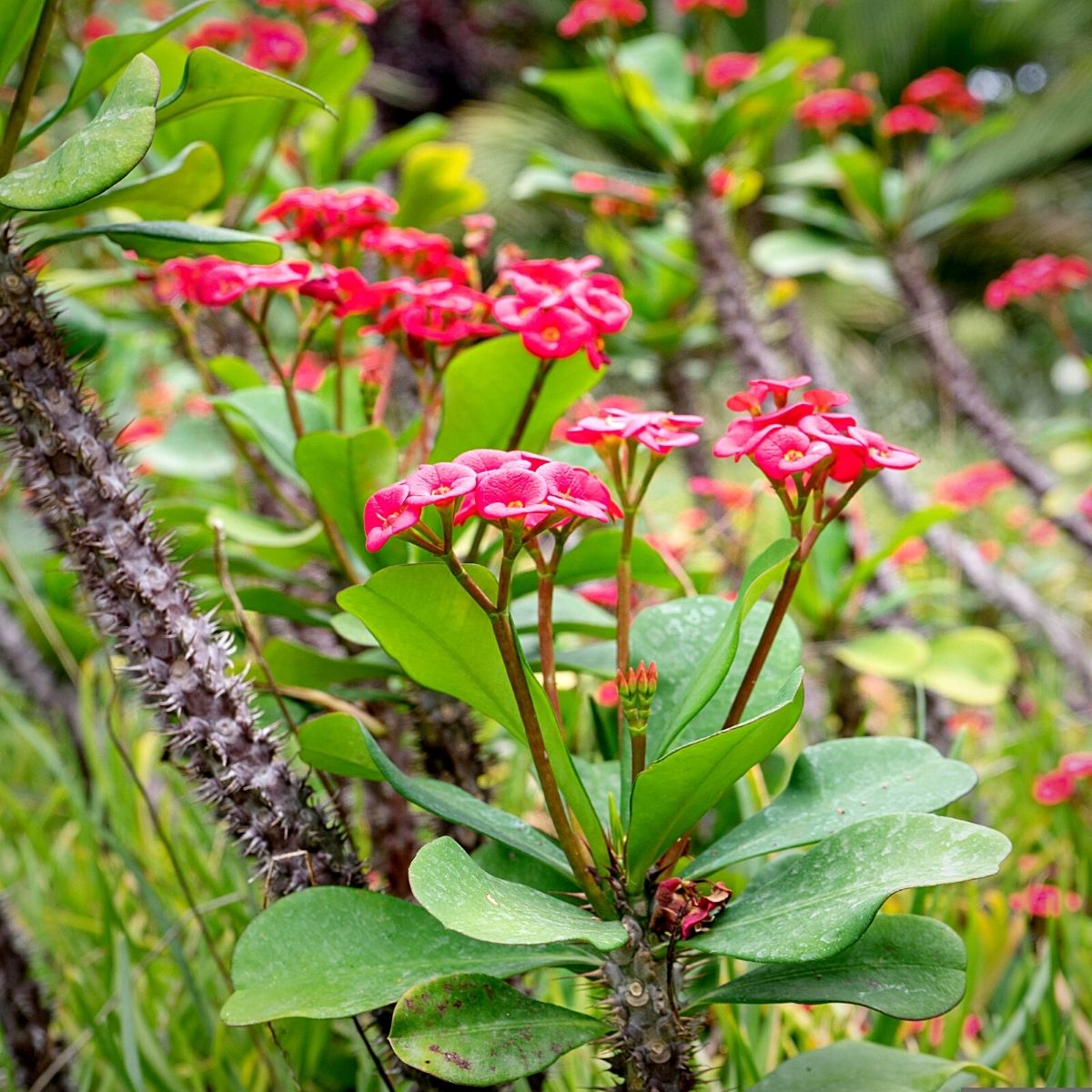
Photo by FinjaM
Propagation
And, although it is possible to cultivate euphorbias from seed, the seeds are challenging to germinate (or even find). Since new growth begins in the spring, this plant is often reproduced by stem cuttings, though it can also be done in the summer. Using a sharp, clean knife, take a tip cutting at least three inches long.
Then allow the cut stem to dry and callous over at least overnight, or even better, for a couple of days. This will improve the success rate. Fill a four-inch pot with a seed-starting mix or cactus potting mix and dip the cutting in a rooting hormone before inserting it at least 1/3 of an inch into the soil. Once you feel resistance when you gently tug on the stem, it is ready to be planted in a larger container or in a garden bed.
Temperature and Humidity
These plants generally prefer moderate temperatures ranging from 65°F to 85°F (18°C to 29°C). Protect them from extreme temperature fluctuations and frost. As for humidity, most Euphorbia varieties can adapt to regular household humidity levels.
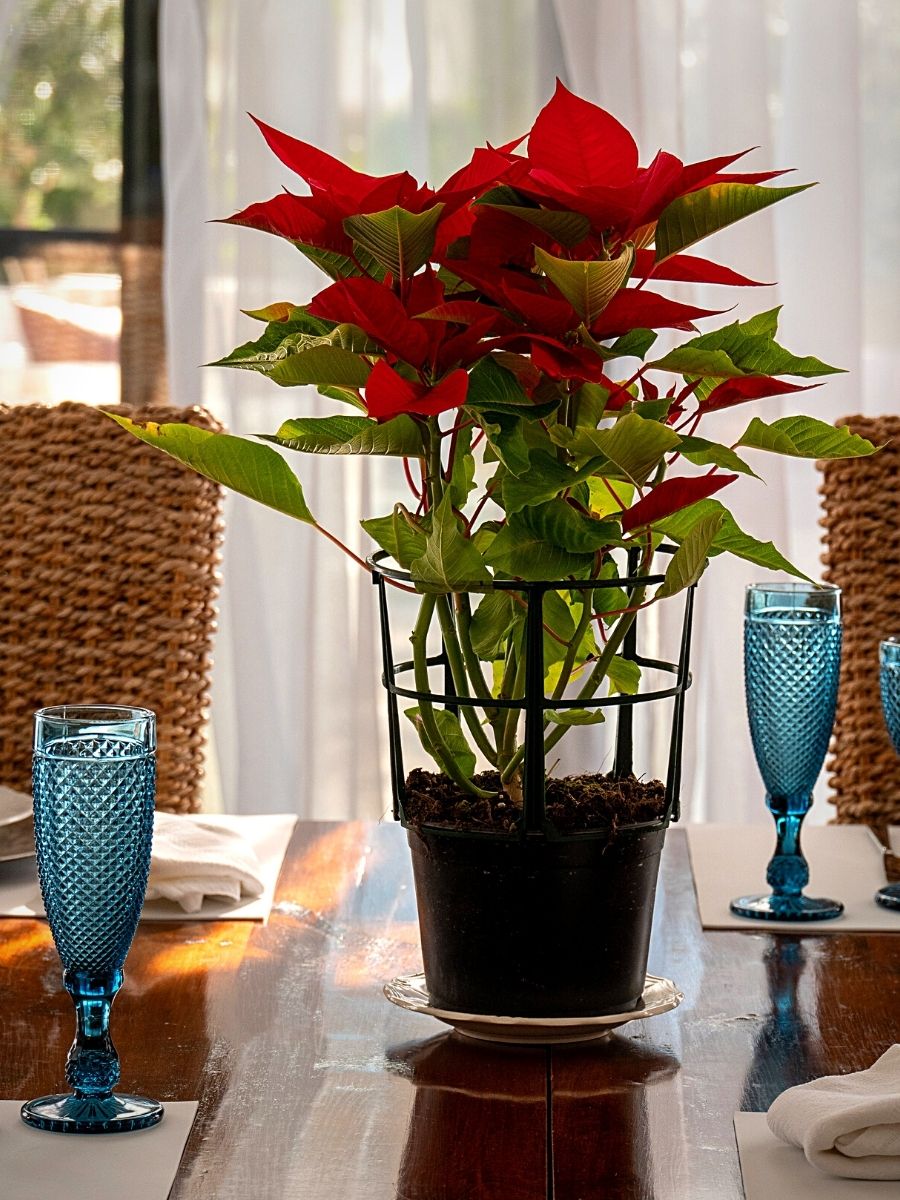
Photo by Fran
However, species like Euphorbia leuconeura appreciate slightly higher humidity levels. You can increase humidity by placing a tray filled with water near the plant or by using a humidifier.
Pruning and Maintenance
Pruning is essential for maintaining the shape and overall health of Euphorbia plants. Use clean and sharp pruning shears to remove dead, damaged, or diseased parts of the plant.
Some Euphorbia varieties, like Euphorbia milii or Euphorbia lactea, have thorns, so wear gloves while handling them. Additionally, regularly remove any fallen leaves or debris from around the plant to prevent pests or diseases.
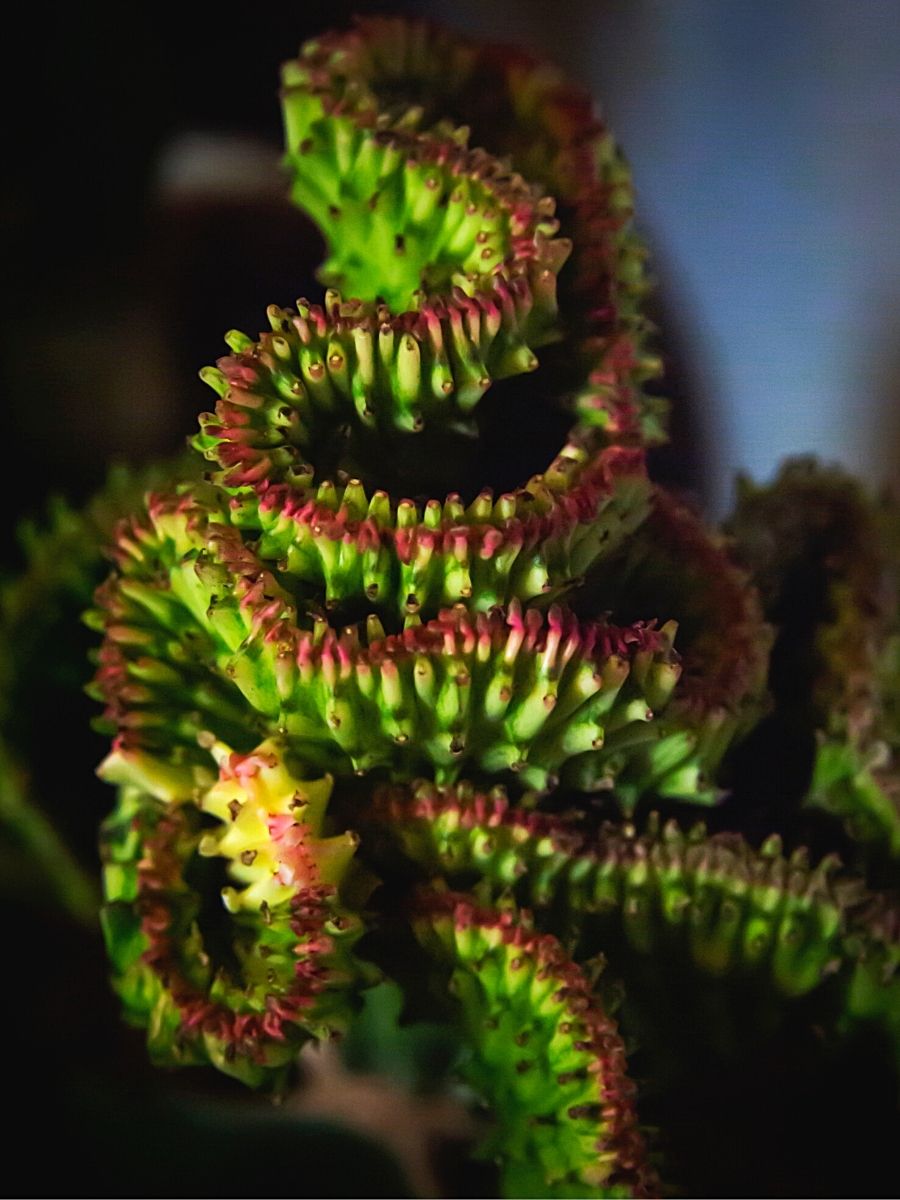
Photo by ng20091093
Common Pests and Diseases
Euphorbia plants typically don't have any issues. Few insects find euphorbias attractive because of the milky sap and the sharp needles. But watch out for a few critters. Pests that are most prevalent are mealybugs and spider mites, which will weaken and ultimately kill them. Both of these insects have a tremendous capacity for population growth.
Therefore, your best chance of controlling them is to catch them early. Oils and soaps that kill insects are effective nontoxic treatments. Furthermore, when conditions are too damp, root rot and fungal infections might develop. Prior to using fungicides, make an effort to improve the conditions in which the plant is growing.
Monitor your plants regularly and take appropriate action if you notice any infestations, and use organic insecticidal soaps or horticultural oils to treat pests, following the instructions on the product label.
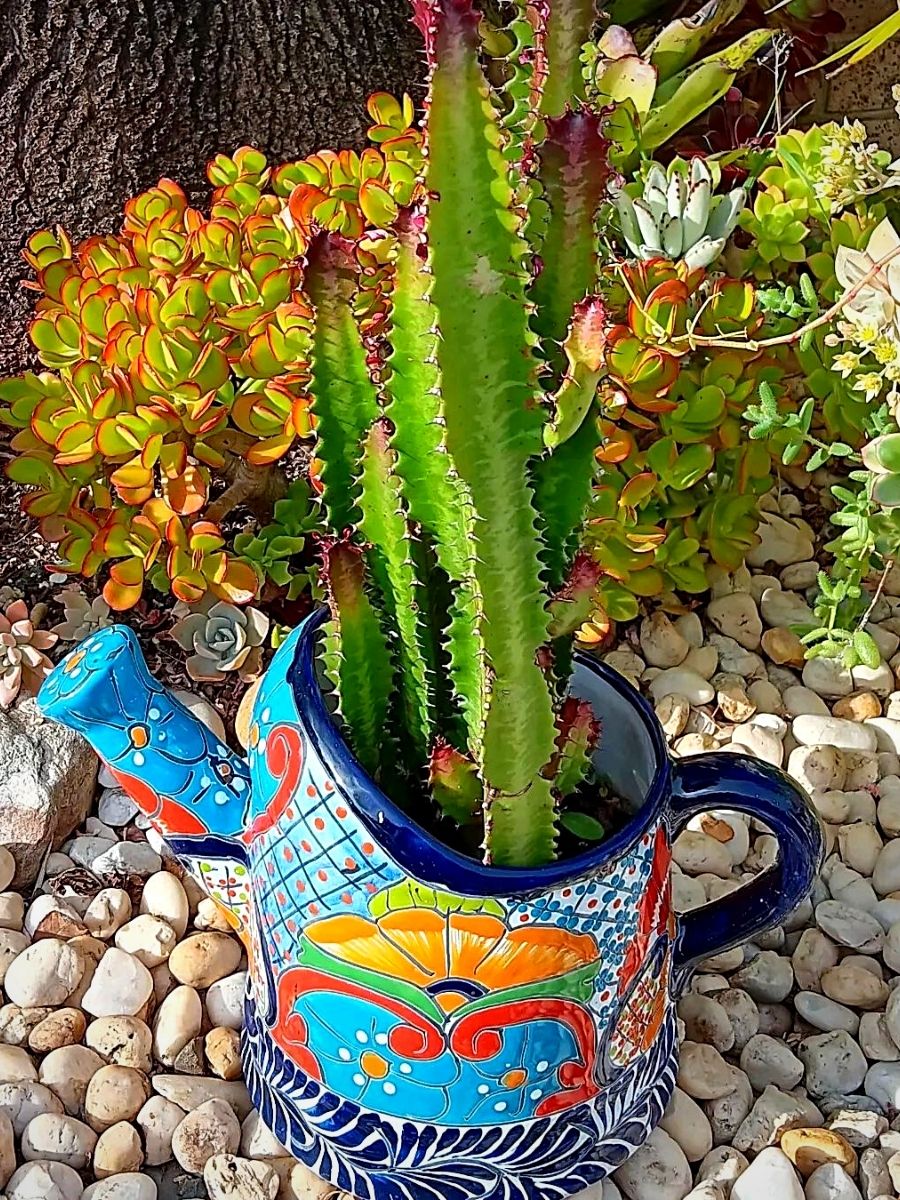
Photo by @rosies_creations2020
Handling Euphorbia Plants and Their Toxicity
It's important to exercise caution when handling Euphorbia plants, as some species produce a milky sap that is toxic and can cause skin irritation or allergic reactions. Wear gloves and protective clothing while pruning or propagating Euphorbia plants. If the sap comes into contact with your skin, wash the affected area with soap and water immediately.
Also, keep them out of the reach of children and pets, and ensure proper handling and care to avoid any accidental contact.
With these guidelines, you can successfully grow and care for Euphorbia plants, creating a stunning and diverse collection that will thrive and bring beauty to your home or garden. What's more, this is how you can enhance the beauty and longevity of your Euphorbia fulgens.
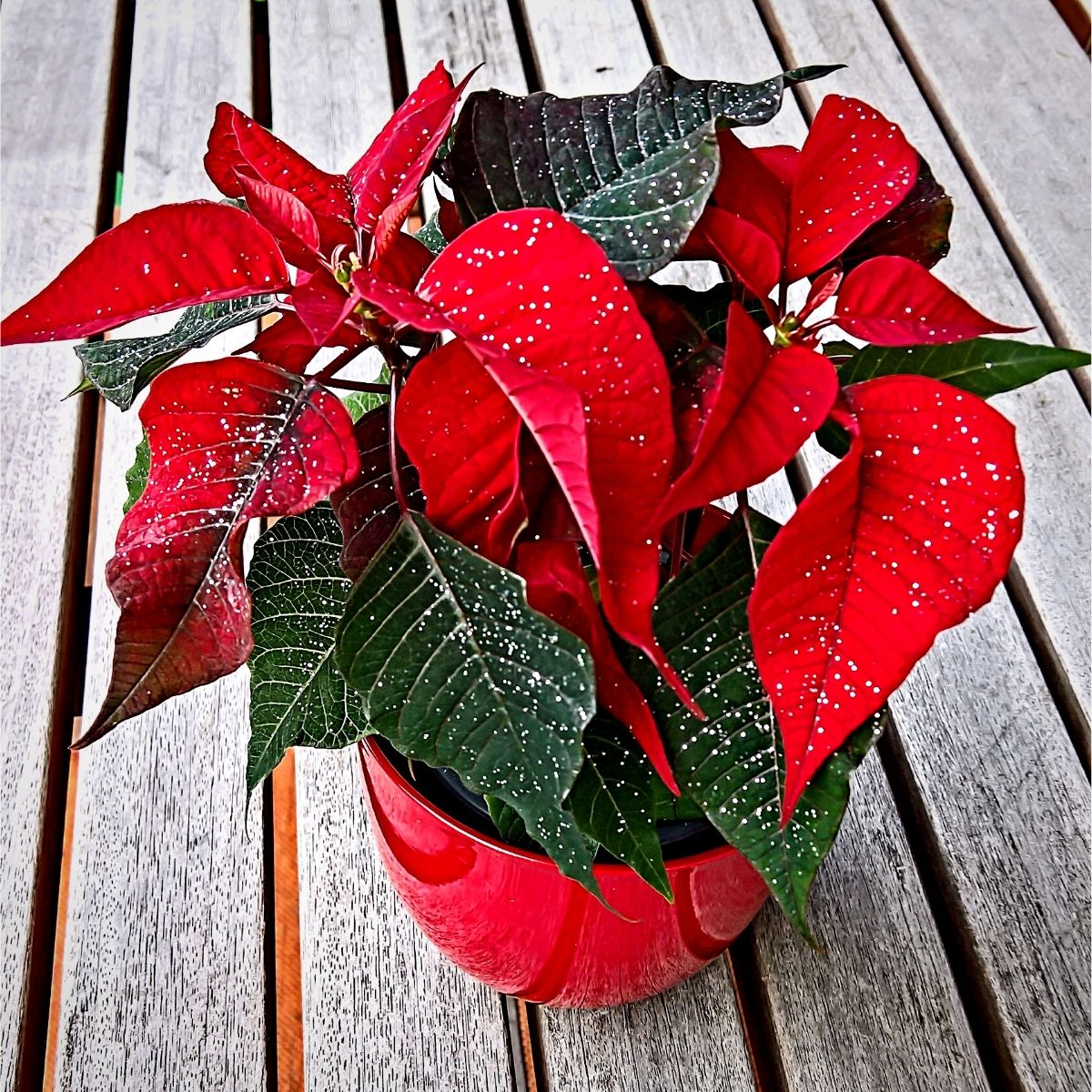
Photo by monika1607
Pro Tip
When in doubt about your Euphorbia, let it drought! If the soil feels slightly moist and you are unsure whether or not to water, the safest bet is to wait and check back in a few days.
Feature image by Fran, and header image by Agnieszka Kwiecień on Wikimedia Commons

